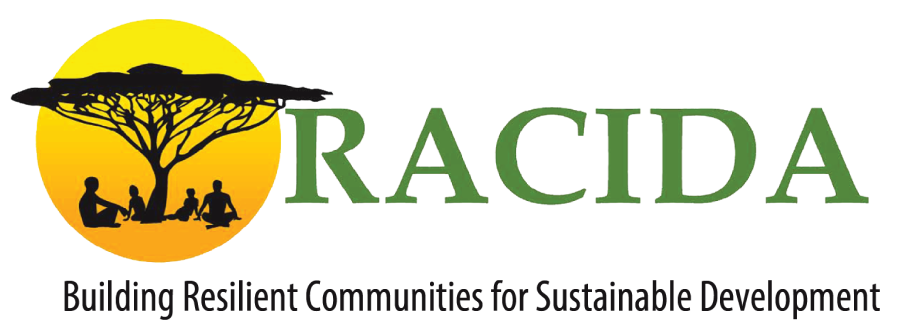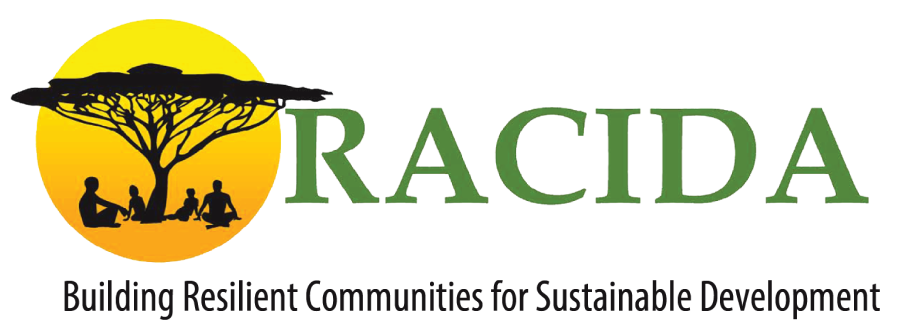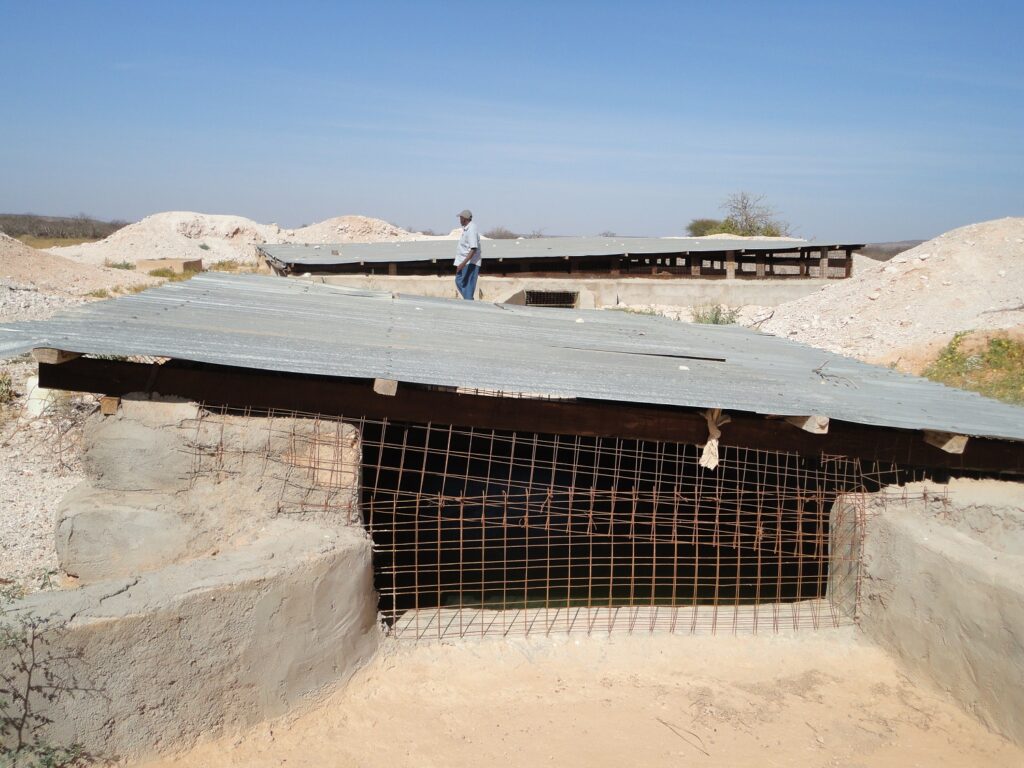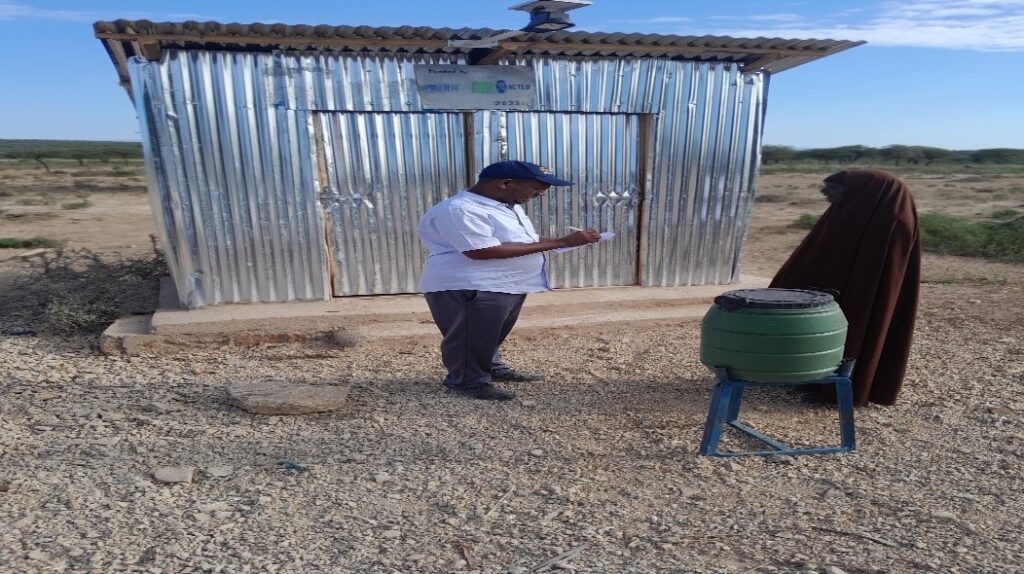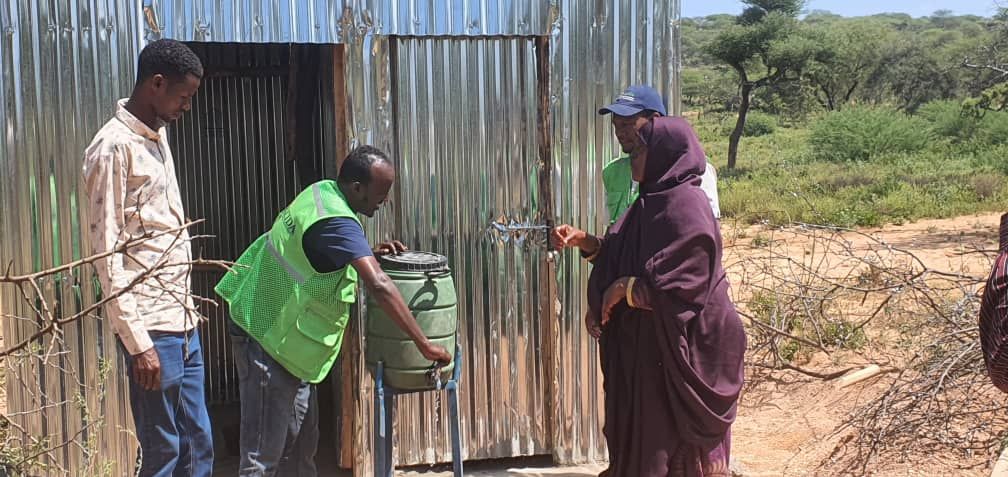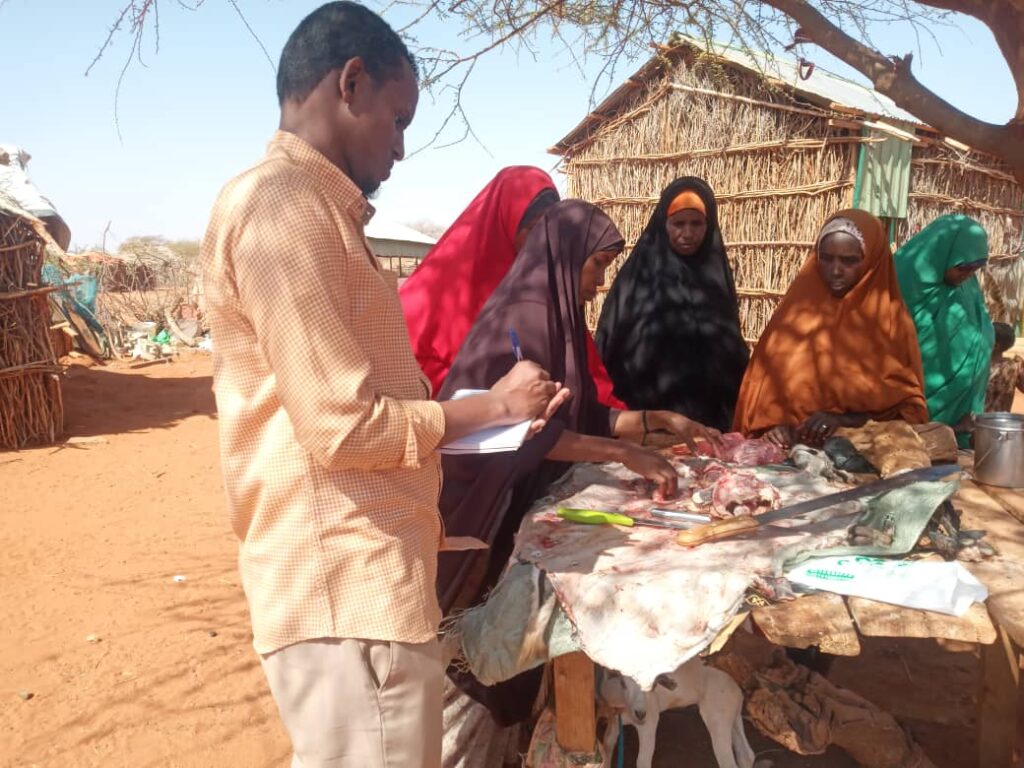The village of Barwaqo 28 kilometers to the west of the main settlement of Rhamu 73 KMs south west of Mandera town had 23 households a year ago. These people settled here after they lost all their stocks to the 2006 drought. The terrain to Mado where they normally fetch water is difficult and the women are susceptible to wildlife attacks and rape. The journey to fetch water took them five hours a day. The nearby shallow wells of Mado 18 kilometers away had dried up and the community relied on water tankering. Glassy-eyed and passionless mothers hungrily crouched on the hot sand with no shade. They waited in long lines for hours to get the days ration of water.
Six month ago the community of Barwaqo took its initiative to excavate their own underground tank under community management. The idea came to them after a local NGO Rural Agency for Community Development and assistance -RACIDA conducted a community managed disaster risk reduction workshop for four days. Together with the agencies personnel the community went through risks assessments, identify their capacities and put measures to reduce their vulnerability. At the end, the community members were able to develop their development strategies and community action plans were formulated.
STAGES IN UNDERGROUND WATER TANKS CONSTRUCTION
- Community mobilization, identification and agreeing on the roles of each are the first step.
- Ground is excavated by community as they own contribution with RACIDA’s mason supervising.
- During construction a rectangular pit of 3M x 12M x 11M is built from the foundation with a concrete slab.
- A silt trap of 2.3M3 is constructed on the inlet of the tank to collect filler materials and sand.
- An outlet is also constructed to the opposite of the inlet to allow overflow and release the water pressure when it gets filled.
- Built from inside, the tank is 1M above the ground level and roofed using corrugated iron sheets and timber/steel bars
- The mason makes an open of 2-3 feet square with a fixed lead for drawing water.
- Excavation and collection of locally available materials is community in-kind contribution in most cases.
Underground tanks play a strategic role in providing water for domestic use during prolonged dry periods. For viability, it is important to construct the tanks close to other water sources, such as earth pans. The technology is not new and uses surface water run-off to fill the tank during the rains. RACIDA has constructed more than 17 underground tanks and rehabilitated three others in Mandera with Burwaqo tank being one of the three funded by Cordaid in the last one year. Their main advantage is to store water towards the end of the dry season for those left in the village when the men and older boys move away with the livestock in search of water and pasture.
The village has 87 households. From a traditional nomadic way of live the community of Barwaqo has now became sedentary. Holding her three months old daughter, Rahma Adan aged 26 stooped over the ashy breakfast fire, the coals still alive. Her mother stood next to her not wanting to intrude our conversation but unable to stop staring. Four other women, walking two abreast, approached their shoes loud on the narrow rocky walkway. The crowd was starting to build up with curious on lookers all around. Even little Amina, Rahma’s third child joined hovering a half filled basin of water over her head from the tank 84 meters away.
Hardship steaming from the climate is something these Kenyans are used to facing for long. Many pastoralists in this part of the country are poor due to consistent droughts. Unpredictable rainfall, recurring drought and loss of soil fertility have made farming impossible. After the construction of the tank an estimated 530 people in the village have now access to water for a period of 2-3 months of the dry spell on alternate days under community management. The community has seen the need to establish a school and they were able to gather 19 pupils for the first year.
Distance to water points is now reduced from 18 KMs to less than a kilometer. Women and children now spend their spare time on other household activities.
There is no much to do here; we can at least take care of our children because we have time for them. The rest I have now is something I did not enjoy from my childhood. I have time to prepare my entitlement of relief food. I can add something small to my small hut. Says Rahma responding to my question of the specific things she does when water is available.
Availability of water in this area was not easy according to Abdifatah Hussein a management committee member. We can now hire water tankers on our own and store in the tank if the rains fail. We collect levies from the water so that we can be independent and truck water on our own. Before we didn’t had anywhere to put even the trucked water. He says
Rahma still recalls the harsh conditions of the shallow wells. When I took it to the river to fetch water it stood there, head hung as if abashed pointing to her emaciated donkey. It is still weak and cannot afford to deliver any load. Rahma says.
Now everything is different. We have started to live; the women have fattened, look at their faces. They are more beautiful and clean now, Interrupted Sheikh Hussein, the mosque Imam.
There is need to give more opportunities that will steer these community towards alternative livelihoods as opposed to full time pastoralism. And all will be well so longer the organization in this community stays intact. Even little Amina’s basin will be full of hope and not just a mere survival. RACIDA shall continue innovatively empowering these pastoralist communities so longer there is the need.
